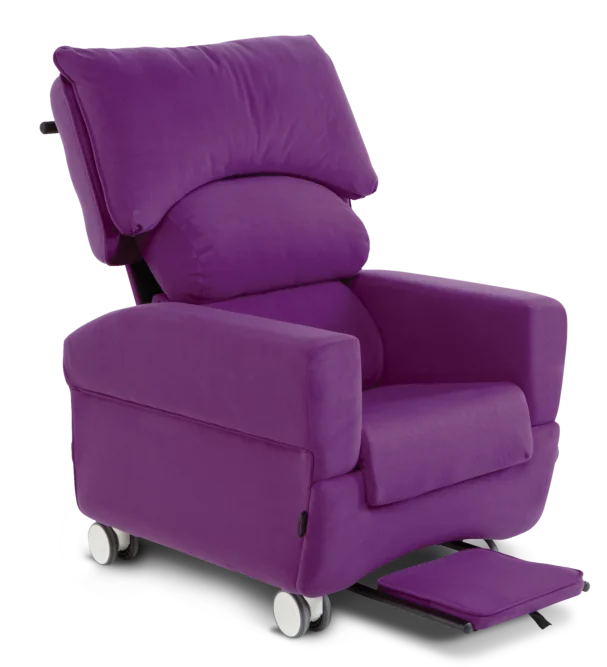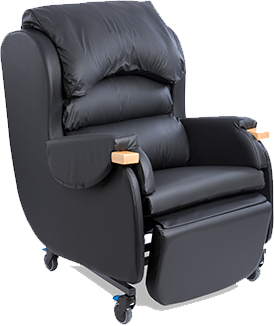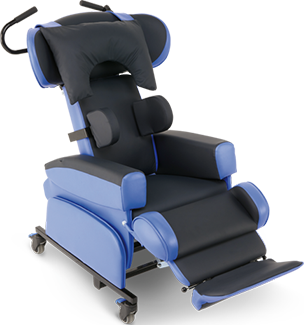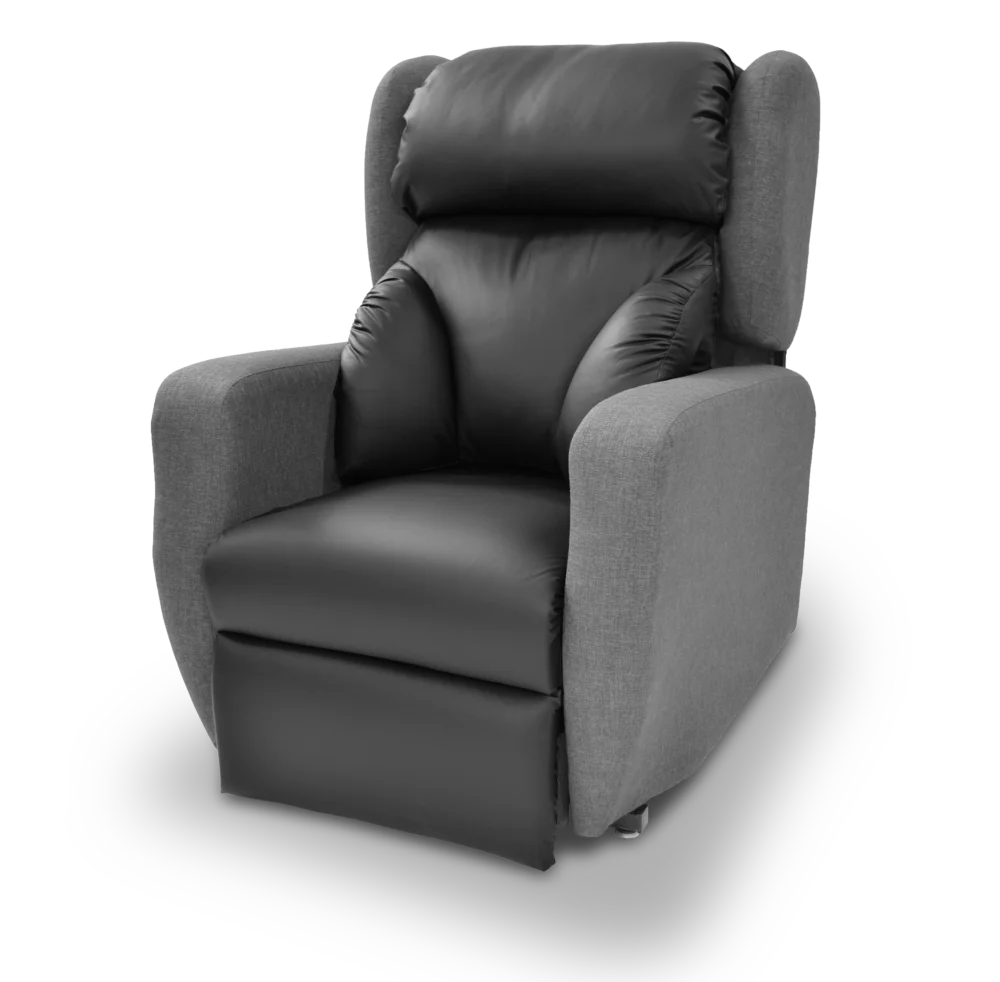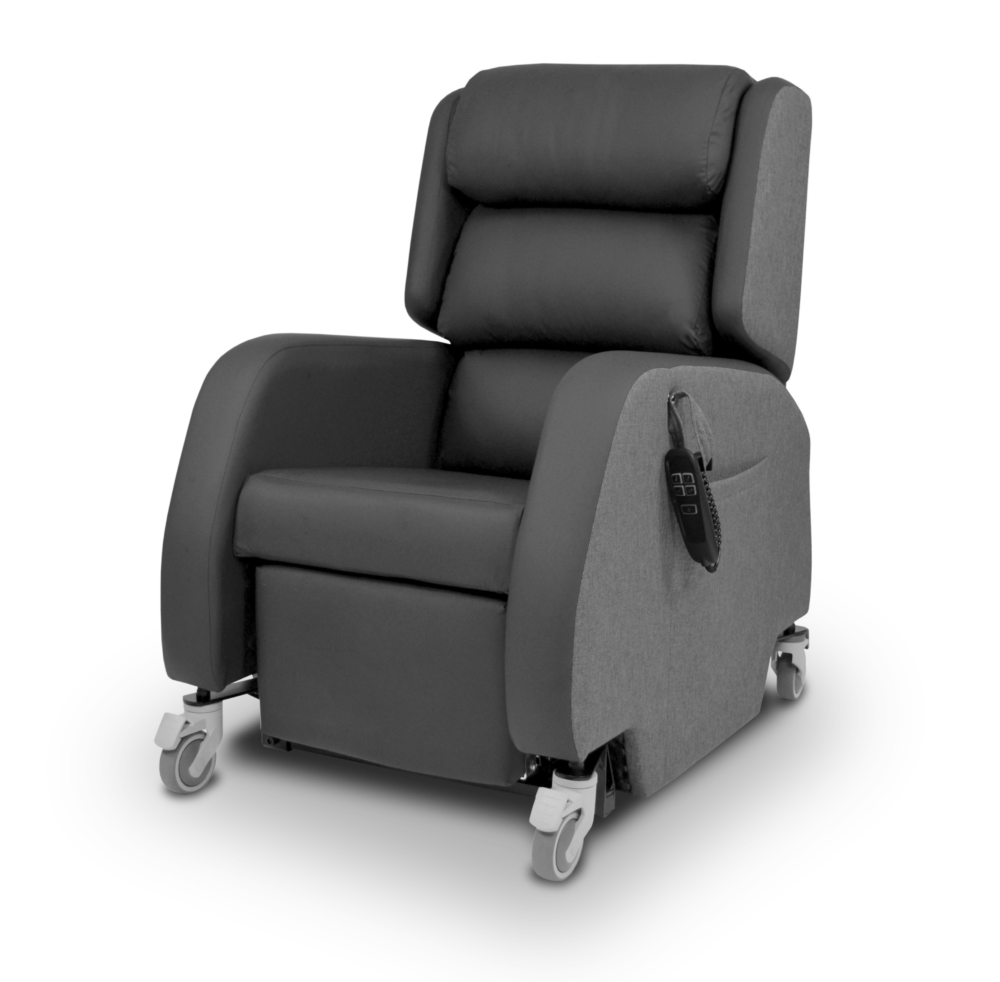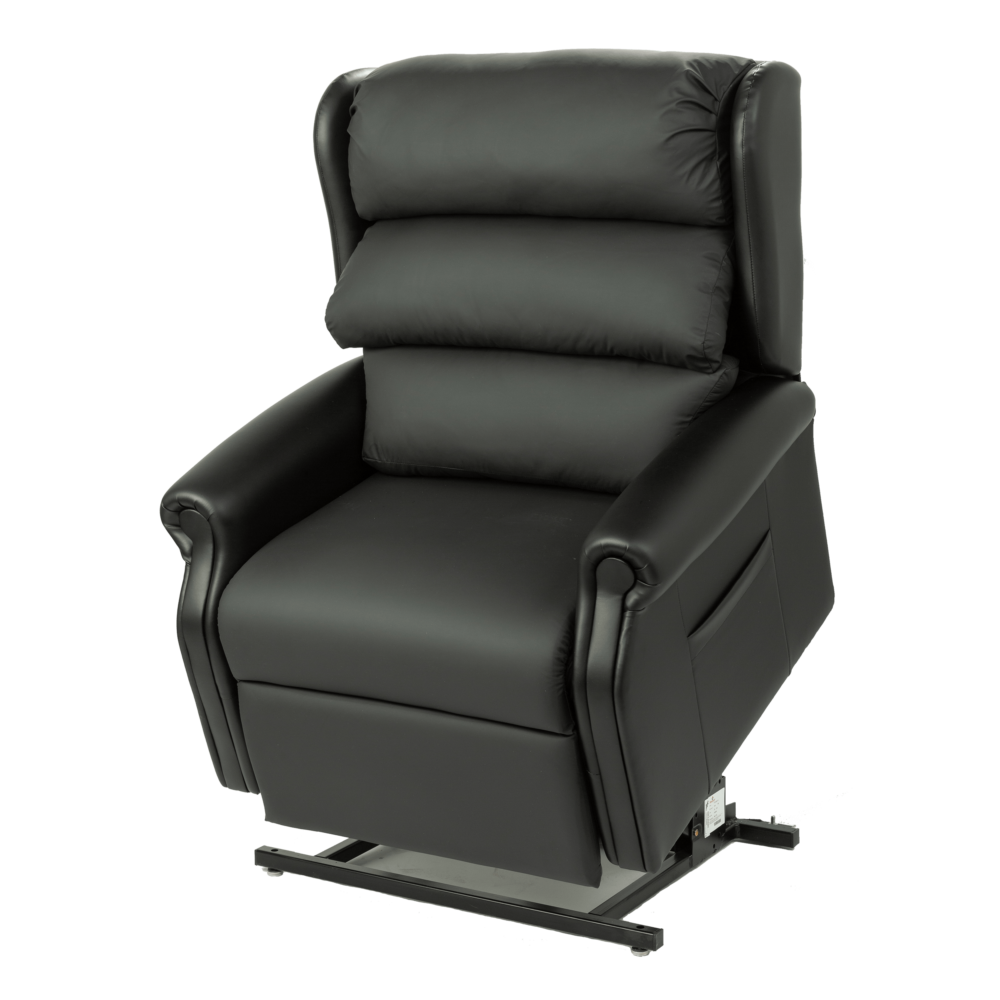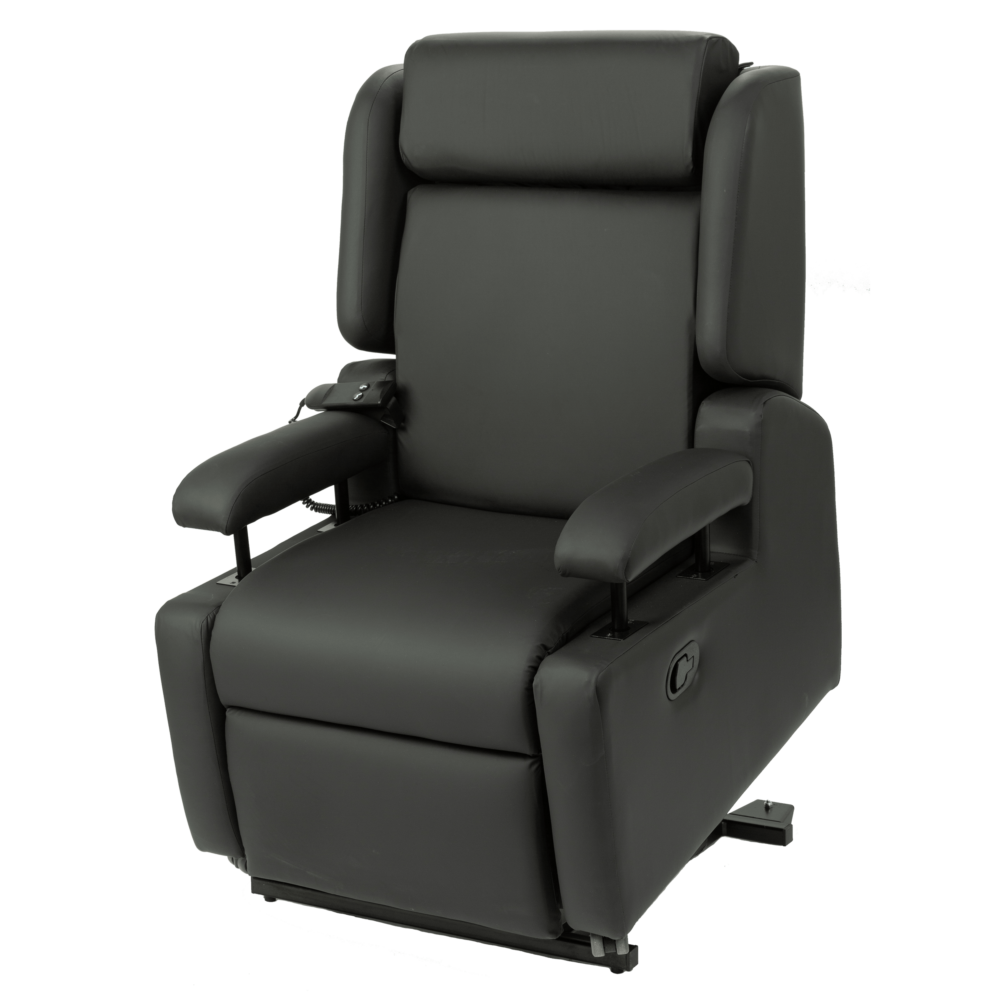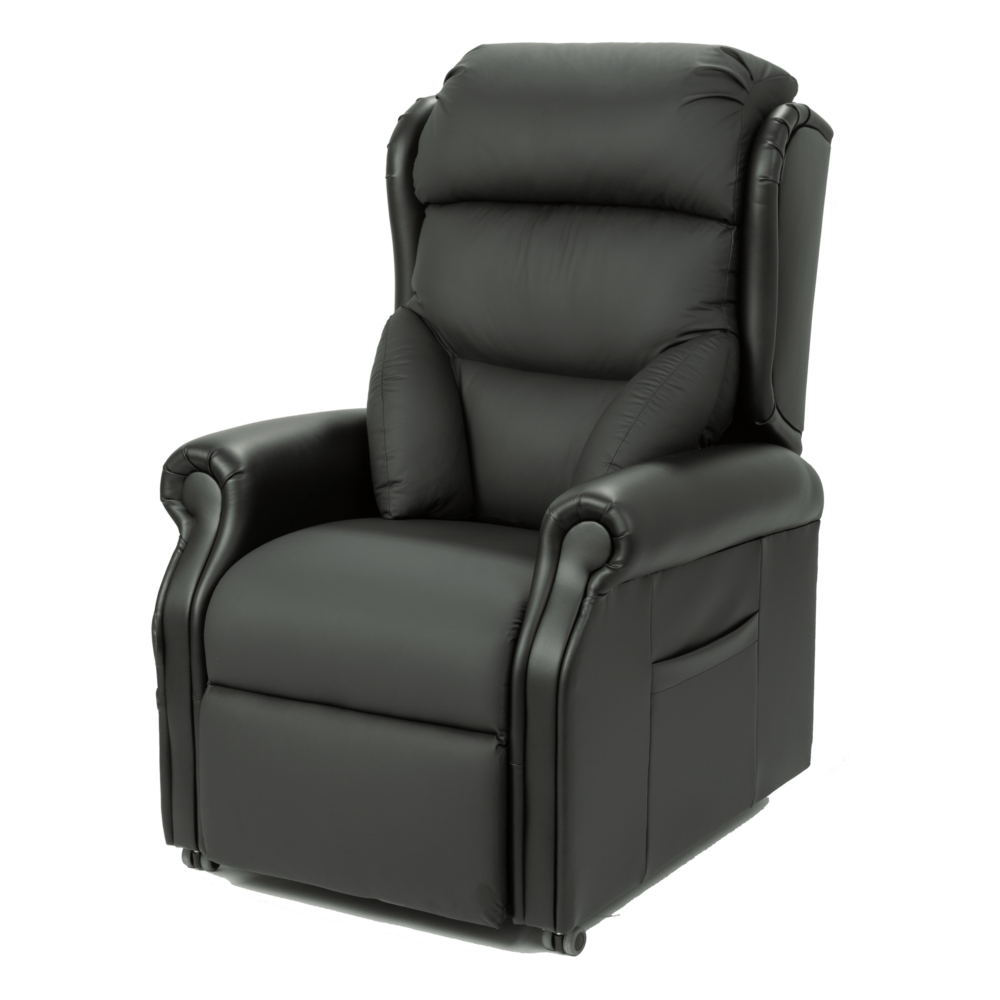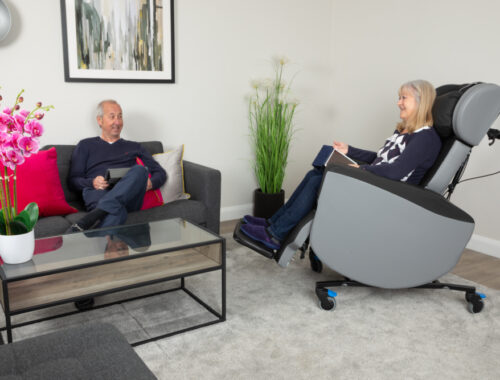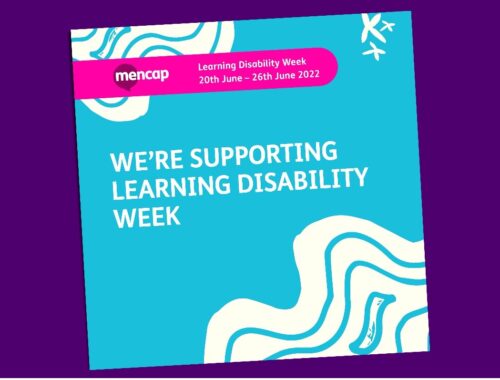Posture and Pressure are Inextricably Linked
The gold standard 90-90-90 sitting position is well-known; however, this isn’t always achievable in real life. Even if we are able to achieve this gold standard position, our weight distribution is as follows:
- Through the buttocks & thighs: 75%
- Through the feet: 19%
- Through the arms rests: 2%
- Through the back: 4%
- (Collins 2001)
 Body posture and positioning – have a direct influence on the pressure going through specific body sites (Sprigle & Sonenblum 2011). The body can only withstand high interface pressures for a very short period of time, and when the pressure is not regularly relieved pressure injuries can develop (Waterlow 2007).
Body posture and positioning – have a direct influence on the pressure going through specific body sites (Sprigle & Sonenblum 2011). The body can only withstand high interface pressures for a very short period of time, and when the pressure is not regularly relieved pressure injuries can develop (Waterlow 2007).
For example: a 32 year old gentleman with cerebral palsy who presents with hypertonicity, kyphoscoliosis, windsweeping and pelvic obliquity. If his seating needs aren’t met, and without appropriate upper limb and foot support, his posture will result in 96% of his body weight just going through one point of his pelvis! It is no wonder pressure injuries can develop in those who have difficulty managing their posture.
A pressure injury is any area of damage to the skin due to:
Intrinsic factors – age, diagnosis, medication, continence, nutrition, cognition, mobility
Extrinsic factors – pressure, shear, friction, moisture
Everyone is potentially at risk of developing a pressure injury.
(NICE 2014)
- The skin and underlying tissues are compressed for a period of time
- Blood cannot circulate causing lack of oxygen and nutrients
- The lymphatic system cannot drain waste products
- Cells die and the area of resulting dead tissue is called pressure injury
Pressure injury – grade 1 to grade 4:
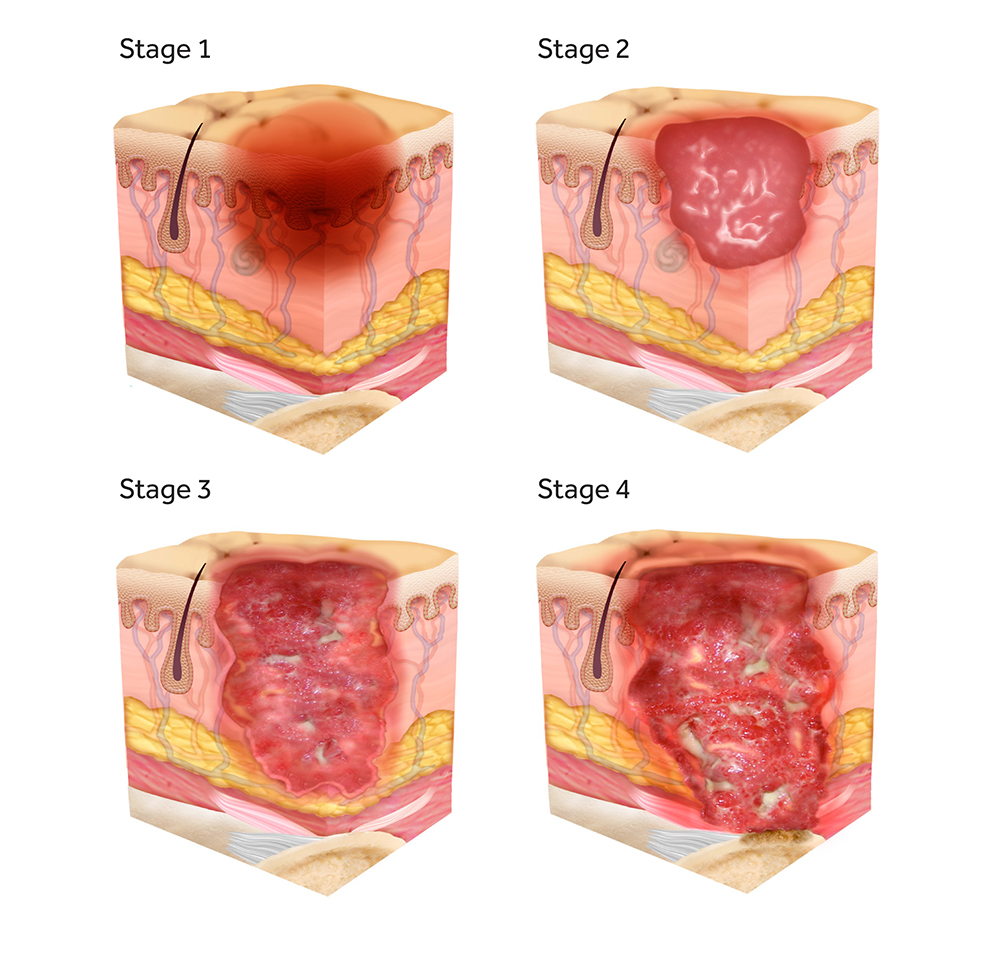 Please be aware there are unstageable stages and other forms of pressure injury.
Please be aware there are unstageable stages and other forms of pressure injury.
“A pressure injury is localized damage to the skin and underlying soft tissue usually over a bony prominence or related to a medical or other device. The injury can present as intact skin or an open ulcer and may be painful. The injury occurs as a result of intense and/or prolonged pressure or pressure in combination with shear.”
(NPUAP 2016)
The impact of a pressure injury on a person is significant, with them being affected physically, psychologically, socially, emotionally, spiritually, and financially (Langemo 2005).Pressure injuries in older persons are associated with a fivefold increase in mortality (Grey & Harding 2006). Pressure injuries can result in longer lengths of stay in hospitals; in one study, adult patients who developed pressure injuries had an extended stay of over 4 days (Graves et al. 2005), which can have a major impact on their health outcomes. Pressure injuries are often painful and debilitating (Moore et al. 2015). Quality of life is understandably reduced in those suffering from pressure injuries; no person’s ability to enjoy normal life should be impacted by a mostly preventable cause (NHS Improvement 2018).
The Health & Social Care Information Centre stated in their NHS Safety Thermometer (2015) report that, on average, 2000 pressure injuries are newly acquired each month within the NHS in England. The cost to the NHS of treating these pressure injuries and related conditions is up to £4 billion a year (Royal College of Nursing & NHS England 2013); in the most severe cases, it can cost between £11,000 and £40,000 per person.
Considering the burden on the economy, and combining this with the unnecessary human suffering, there is an increasing need to raise awareness of the importance of postural management within pressure care; ultimately affirming the vital provision of postural management equipment.
Postural management is a key part of pressure injury prevention.
Prevention can not only improve an individual’s outcomes, but it can also reduce the costs to the service and benefit the wider community:
 Core principles – healthcare professionals should:
Core principles – healthcare professionals should:
Know the needs of individuals, communities and population, and the services available
Understand specific activities which can prevent, protect, and promote
Provide holistic health assessments for people at risk of developing pressure injuries
Ensure people with an existing pressure injury or identified at risk of developing one have access to pressure redistribution devices
Recognise the important role individuals, families and carers have in preventing and managing pressure injuries
(Public Health England 2015)
Appropriate postural management and equal weight distribution with adequate pressure redistribution and a regular change of position can help reduce a person’s risk of developing a pressure injury.
Please get in touch if you, or someone you know, is having difficulty managing their sitting posture in standard equipment. Call CareFlex on: 0800 0186440. Alternatively, email me on: Rebecca.Dunstall@careflex.co.uk.
Rebecca Dunstall
BSc(Hons) Physiotherapy, MCSP
Clinical Specialist
References:
- Collins F (2001) Selecting cushions and armchairs: how to make an informed choice Journal of Wound Care / Therapy Weekly Supplement 13(5)
- Graves N, Birrell F, Whitby M (2005) Effect of pressure ulcers on length of hospital stay Infect Control Hosp Epidemiol 26(3):293-7
- Grey JE, Harding KG (2006) Pressure ulcers BMJ 332(7539):472–475
- Health & Social Care Information Centre (2015) NHS Safety Thermometer: Patient Harms and Harm Free Care England April 2014-April 2015, official statistics Available from: http://digital.nhs.uk/catalogue/PUB17488
- Langemo DK (2005) Quality of Life and Pressure Ulcers: What is the Impact? Wounds 17(1)
- Moore ZE, Webster J, Samuriwo R (2015) Wound-care teams for preventing and treating pressure ulcers Cochrane Database Syst Rev 16(9)
- National Institute for Health and Care Excellence (NICE) (2014) [CG179] Pressure ulcers: prevention and management Available from: www.nice.org.uk/guidance/cg179
- National Pressure Ulcer Advisory Panel (NPUAP) (2016) NPUAP Pressure Injury Stages Available from: http://www.npuap.org/resources/educational-and-clinical-resources/npuap-pressure-injury-stages/
- NHS Improvement (2018) Stop the Pressure Available from: http://nhs.stopthepressure.co.uk/
- Public Health England (2015) Guidance Pressure ulcers: applying All Our Health Available from: https://www.gov.uk/government/publications/pressure-ulcers-applying-all-our-health/pressure-ulcers-applying-all-our-health
- Royal College of Nursing, NHS England (2013) Pressure ulcers A guide to eliminating all avoidable grade 2, 3, and 4 pressure ulcers Available from: http://nhs.stopthepressure.co.uk/docs/Pressure_ulcer_care_best_practice.pdf
- Sprigle S, Sonenblum S (2011) Assessing evidence supporting redistribution of pressure for pressure ulcer prevention: A review Journal of Rehabilitation Research and Development 48(3):203-14
- Waterlow (2007) Pressure Ulcers Available from: http://www.judy-waterlow.co.uk
- www.gov.uk/guidance/pressure-ulcers-applying-all-our-health

